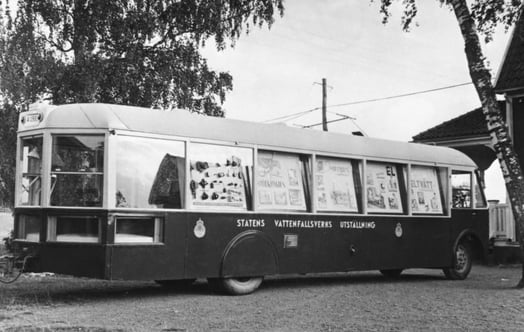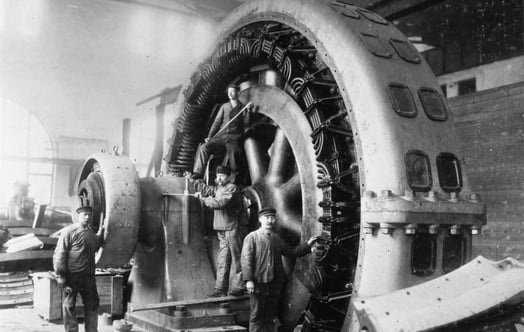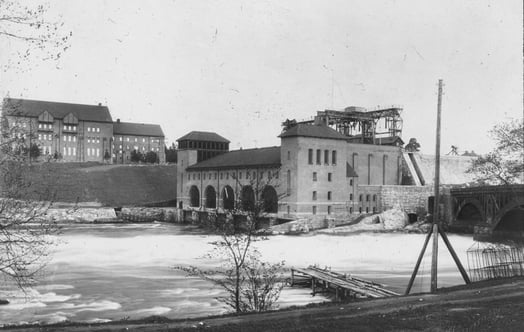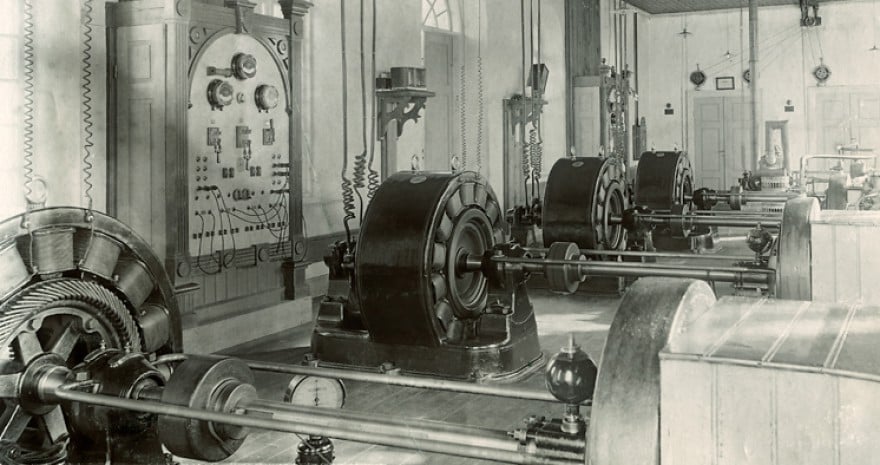
Before Vattenfall
On 4 September 1882, Thomas Alva Edison switched on the electrical current at the Pearl Street Station power plant in New York. A breakthrough for modern electrical power distribution. However, there remained a number of problems for the power industry to solve. A Swede was one of those who managed to formulate the answer.
Thomas Alva Edison had developed a functioning light bulb in 1879. He then solved several problems that made it possible to create a system that allowed users to subscribe to electric lighting. This novelty, electric lighting, soon spread all over the world. In 1885 the first Swedish DC facility for street lighting was put into operation in Härnösand.
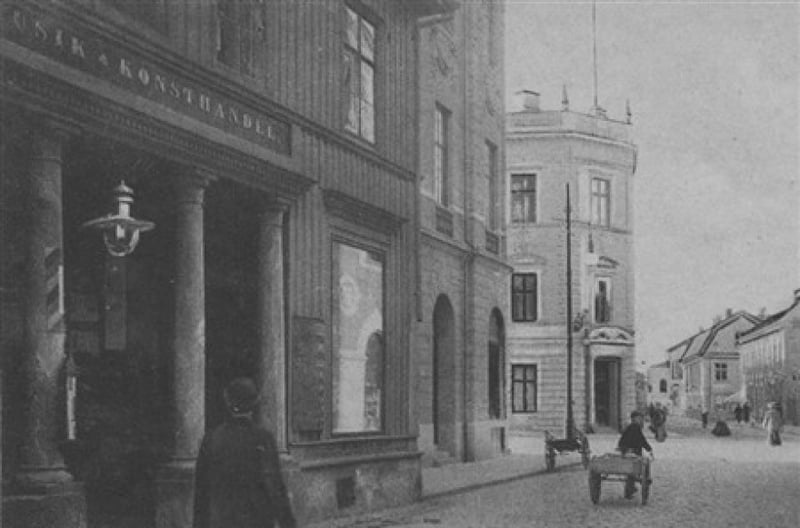
The streets of Härnösand | Year: 1885 | Place: Härnösand | Creator: Okänd | ID: VF000001
In the late 1800s total energy demand in the industrialised world increased, and electricity became increasingly attractive as an energy source. This was especially true in Sweden, which was entirely dependent on coal imports for its energy supply. Hence hydro power was named “the white coal”.
As early as 1882 Ryds Bomullsspinneri, a spinning mill in Västergötland, had installed a dynamo to provide the company with electricity for lighting. The power was obtained from the nearby Viskan. The following year the Domnarvet ironworks in Borlänge installed an electric lighting system. Many industries were now building their own electric plants, primarily for lighting, and during the 1890s also to drive motors. The early systems used direct current at low voltages.
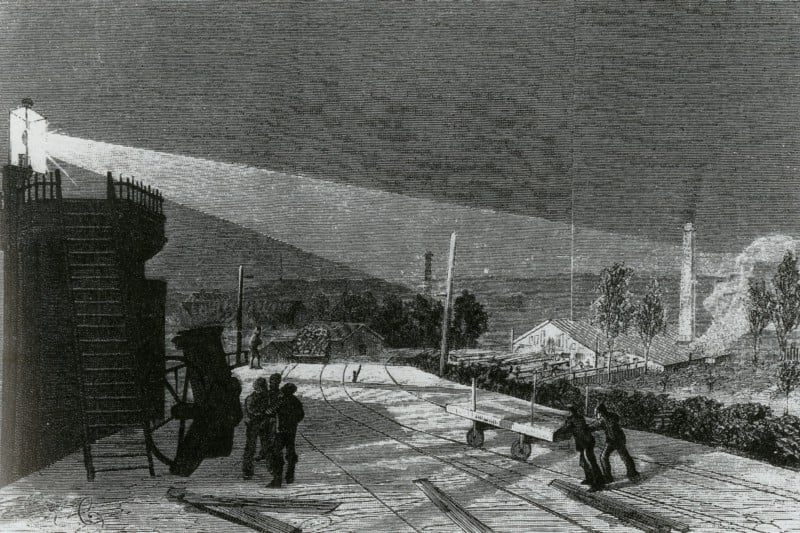
A bow light at Näs lumber mill. From 'Ny Illustrerad tidning'.| Year: 1878 | Place: Näs | Creator: Okänd | ID: VF001047
Three-phase technology – Sweden at the forefront
Yet there still remained a crucial problem with electricity to be solved. Direct current could drive motors, but it could not be transmitted over long distances. Conversely, alternating current could be transported long distances. Swedish engineer Jonas Wenström was one of the people who successfully solved this issue in the 1890’s: with three-phase technology.
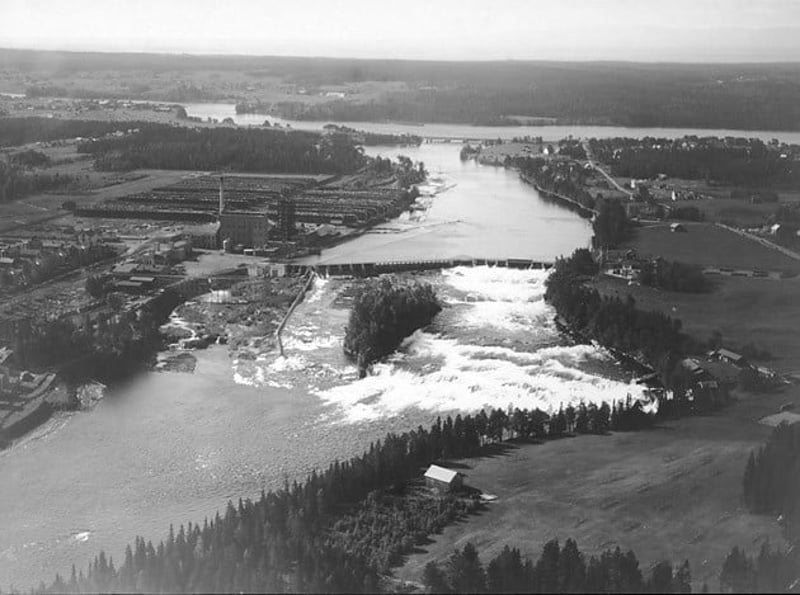
Hissmofors power plant | Year: 1929 | Place: Hissmofors | Creator: Okänd | ID: VF000006

Hällsjön power station | Year: 1893 | Place: Hällsjön | Creator: Okänd | ID: VF000003
Using alternating current and transformers, electricity could now be transmitted over significantly longer distances. Hydropower – of which there was plenty in Sweden – could now be exploited. Industries no longer needed to be located next to a suitable watercourse.
Thanks to Wenström's innovation, from 1893 electrical power could start to be transmitted from a power station near lake Hällsjön in Dalarna to the mines in Grängesberg, a distance of 15 kilometres. And the following year, Sweden's first commercial power company was formed, Hissmofors AB. The company produced and distributed electric power, primarily from a waterfall on the river Indalsälven.
After the breakthrough with three-phase technology, a number of hydropower plants were now established, and they in turn supplied the local distribution undertakings and industries with power. At the turn of the century there were upwards of 50 power plants in Sweden. They were both privately and municipally owned. The major breakthrough for larger power companies came in the first decade of the twentieth century.
Video player requires marketing cookies.
To view this content please click here to allow marketing cookies.
The story of an old hydro power station (in Swedish). A clip from the movie "Näs - En vattenkraftens trotjänare".
Development blocks formed
Industries now started to be located in a more rational way, close to the market and where there was plenty of labour. In other words, in the cities. The period between the 1890s and 1920s was the major growth period for industrialised cities in Sweden. When the knowledge available within industries was concentrated, it could be better exploited. So-called 'development blocks' were formed, where growth within one business area created new needs in other areas.
Sweden, thanks to its geography, had access to plenty of hydropower and so electricity was cheap. For this reason, Swedish industry was characterised by a much higher degree of electricity use than industries in other countries.
This is still the case today.
When Vattenfall was founded in the early 1900s, the intended target group was also primarily industry. Vattenfall's first power plants – Olidan, Porjus and Älvkarleby – were sited with industry and railway expansion in mind.
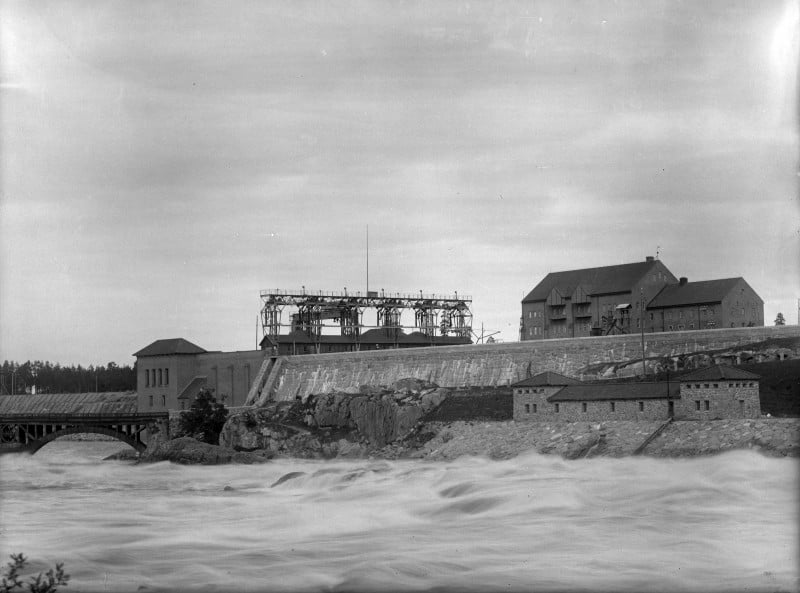
Älvkarleby power plant | Year: 1913 | Place: Älvkarleby | Creator: Okänd | ID: VF000005


